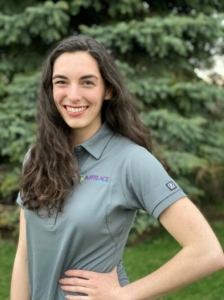January 4, 2021
The COVID-19 Vaccine Has Arrived, but Remote Patient Intake is Here to Stay
The FDA recently gave emergency approval to the Pfizer and Moderna vaccines for COVID-19, and more vaccines are under review for the same approval now. This is a major accomplishment, a potential light at the end of a very long tunnel. With these effective vaccines, we can hopefully — sooner rather than later — get back to in-person work and school, and spending time (face-to-face) with family and friends. But, will patients want to get back to sitting in crowded waiting rooms before appointments? Probably not. As a healthcare consumer, I am not interested in that.
There are some aspects of everyday life that will be changed forever because of this pandemic, and the healthcare patient intake process is likely to be one of those things.
Healthcare organizations have been seeking to incorporate technology into their practice for a while, and the need to move care online due to the pandemic has accelerated these plans. Healthcare organizations want to give their staff more time to focus on patient-centric needs, and patients expect technology infused into their healthcare. I expect this. I can order groceries online, I can bank online, I can have my dinner delivered to my doorstep within minutes with the touch of a button, and the list goes on. We live in a world that has grown accustomed to having the power of technology in the palm of our hand, and it would only make sense that I could engage with my healthcare provider online. This is where Interlace Health steps in.
My role as a Solution Architect at Interlace Health is to talk with healthcare organizations, understand their needs, and work with them to find the best solution to meet those needs. I connect with hospitals and health systems of all sizes, who are all striving to engage patients safely, and remotely through technology. It is exciting to be a part of this innovation and hear perspectives from people in various roles across different areas of healthcare organizations. I wanted to share some insight I recently gathered from conversations with a few healthcare professionals here.
- This fall, I spoke with a Director of Patient Registration at a mid-sized health system. She was focused on reducing patient wait times. She said it can take anywhere from 6 to 15 minutes to register each patient in their ambulatory clinics and the patients need to complete up to 9 forms, 11 if they have Medicare. They see about 350 patients per day at their clinics, that is a lot of time and a lot of paper. Her team was very excited to see Interlace Health’s Remote Patient Intake Solution. Empowering patients to complete their registration forms remotely, before their appointment, saves patients and staff time, increases patient satisfaction and safety, and of course, eliminates printing paper and shared surfaces in the clinic. In fact, hospitals that implement a pre-registration process have seen a 60% reduction in patient wait times.
- Reducing wait times is just one of the advantages of remote patient intake, and the ability to text patients takes that a step further. The IT Director at a regional medical center loved Interlace Health’s ability to have no-contact registration and enable patients to bypass the waiting room all together with the option to send text messages to patients. He saw many advantages in the ability to allow patients to wait in their car and send a text when their exam room is ready.
- At another larger hospital I met with, the Patient Access Manager asked about collecting insurance information and co-payments in advance of the appointment. Their current-state workflow was calling the patient to collect the payment or having the patient sign a form saying they promise to pay. This often placed staff members in uncomfortable situations. They were intrigued to see that our solution lets the patient upload a photo of their insurance card and submit their co-payment at their convenience, any time before the visit. Surveys have found that 83% of patients prefer to pay their bills online.
The advantages of infusing technology and patient engagement into healthcare extend far beyond the necessity that stemmed from the pandemic. While the pandemic may have fast-tracked the digital patient intake process, it also brought to light the many benefits and the realization there is no going back. It is exciting to be a part of the work being done at Interlace Health to ease the process of transitioning to a remote patient intake process and drive real results for staff and their patients.
For more information on a zero-contact registration process, download our whitepaper.
ABOUT THE AUTHOR:

Ellie Silver is a Solution Architect at Interlace Health. In this role, Ellie provides expertise to healthcare organizations, incorporating Interlace Health solutions, services, and integration technologies to help optimize workflows for patients, providers, and staff. Her degree in Health Science combined with her experience as a Project Manager and End User Trainer enhances her abilities as an innovator in the healthcare IT industry. Ellie is enthusiastic about healthcare and is passionate about helping healthcare organizations create continuous success.
